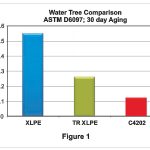
Carmelo Maria Brocato*
Among the various forms of energy necessary for the sustainability of the growth of any country, Electric Energy (EE) plays a fundamental role. The aggregated world consumption of EE in 1990 was in the range of 10,000TWh; it surpassed 15,000TWh in 2005 and jumped to almost 19,300TWh in 2012. According to prominent forecast, the aggregated demand of EE will dramatically increase in the next 27 years reaching in 2040 the amazing amount of 32,500TWh.
Referring to the data available relevant to 2012, China – 1.35 billion people – has been the largest consumer of EE with an aggregated demand of approximately 4,300TWh, followed by USA – 310 million people – with approximately 3,800TWh. It is important to note the modest demand of India – 800TWh for 1.2 billion people – when compared with the demand of China since the two hugest countries are comparable in population. It is quite reasonable to assume that, in the long term, the per-capita demand of EE in India will somehow reach the present per-capita demand of China; on the other hand it is quite reasonable to consider that China’s per-capita demand of EE will somehow become similar to the present USA per-capita demand. Last but not least, we should not forget that a non-negligible portion of the world population still has limited or non-existing access to EE.
It goes without saying that the increase of EE production will require more lines for transmission, more motors for utilisation, more drawing machines and stranding machines for making cables, etc. Indeed, copper rod and aluminium rod are, and will remain, the backbone of generation, transport and exploitation of EE.
Sixty years ago, when many were not clear about the concept of globalisation, Continuus-Properzi was bringing its technology and its equipment for producing nonferrous rod – mainly aluminium rod at that time – to the major players of cable industry worldwide. Talking about India, from the end of the 1950s to the end of the 1960s, Properzi delivered and put into operation approximately 10 Al rod lines giving a significant contribution to the electrification of the vast territory of India. In the most recent time, from 2008 through 2012, Properzi has delivered 7 Al rod lines, for a total capacity of 700,000 tons per year, to prominent aluminium players.

Talking about copper, the data available show that refined copper production has been in the range of 20,500,000 tons in 2012. Most of the analysts agree that it can be considered that 57 per cent of the total production is devoted to the wire and cable sector, while the balance goes to other applications, namely billets, slabs, cakes and ingots. Although the above analysis might be affected by a minor imprecision or discrepancy, it will give a reliable idea about the utilisation of copper worldwide.
Since many years the vast majority of producers of copper semis (rod, billets and slabs) use electrolytically refined cathodes as raw material to get their products. We need to consider that the most modern recovering technology makes economically sustainable mining ore with copper content lower than 1 per cent! Indeed, in general terms, the production of 1 ton of copper requires processing 100 tons of ore. We can say that for producing 1 ton of copper, we must “disturb” the equivalent of five trucks of ore!
Besides, in this sector, the recycling industry plays a role of great importance if we take into account that copper is recyclable, more than any other commercial engineering material, without incurring any major deterioration. Therefore, copper scrap can truly be considered as “the Bank of Energy” storing the precious energy that has been used to recover the copper from the ore. On this regard, data available for 2012 illustrate that the trade of scrap worldwide has surpassed six million tons.
Starting from 1986, Properzi has delivered and commissioned worldwide complete plants for the production of copper rod using 100 per cent scrap as raw material. Such rod is known under the acronym FRHC, which stands for Fire Refined High Conductivity. During the years the technology has been improved a lot and today’s FRHC rod is an economic commodity that, by resurrecting copper scrap of first, second and third quality, can comply with ASTM-B49 and EN1976 standards. It can be processed in high-speed multiwire drawing machines down to 0.4mm–0.3mm (0.25mm for experienced producers) and used in many engineering applications other than fine wire, ultra-fine wire and magnet wire. Besides the rod, the copper scrap refined through Properzi equipment has been also used for the production of billets and slabs.
The FRHC metal is produced in a batch process (the basic input design considers 300 working days per year) meaning that each day the copper scrap is loaded into the empty refining furnace where the phases of melting and refining are completed in about 16 to 18 hours. After that the furnace pours the liquid metal into the casting equipment for transformation into rods, billets or slabs.
The smallest plant has a capacity of 10,000 tpy, whereas the largest plant, recently commissioned in the USA at the SDI-La Farga Facility, produces FRHC rod and has a nominal capacity of 75,000-80,000 tpy and is equipped with a revolutionary refining furnace, patented by Giulio Properzi, which loads the scrap from the top. This new design of the refining furnace allows a great saving of thermal energy during the critical phase of scrap loading, thus achieving a better efficiency for the whole process. n
*Carmelo Maria Brocato
currently serves as vice president of
the board-commercial director,
Continuus-Properzi S.p.A.




